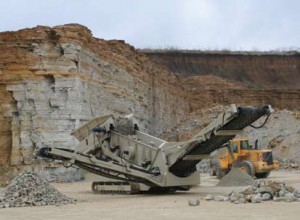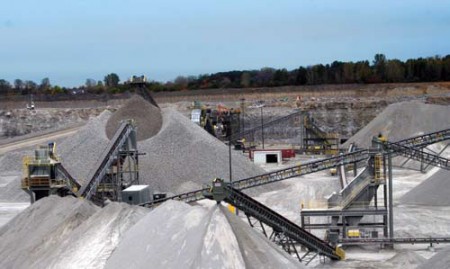Gulin® develops, manufactures and markets mobile, portable and stationary crushing & screening plants for the crushed stone, sand & gravel, recycle, mining and other material processing industries.
Founded in 1995 as production mining and constructing products, our company revolutionized the materials processing industry with the introduction of the gravel high frequency screens. We currently offer the broadest line of mobile, stationary and portable screening solutions in the world. Our mission is to provide the most innovative solutions in material processing, while focusing on quality, cost and economic advantage to the material producer.
Portable gravel crusher
Portable gravel crusher is the complete solution for processing for the gravel producer. This closed circuit mobile plant incorporates a double deck high frequency screen with a jaw crusher. With a set-up time of around 15 minutes, it can be easily and quickly moved around to multiple sites to process gravel back to its required size.
Y2S1848L portable crusher is a track screening plant that features the ultimate in screen production and efficiency. This plant is designed with a direct feed system for operation with track crushers in tight spots and comes with a double deck high frequency screen for a wide range of applications. Providing the highest screen capacity in the market for material separation ranging from 1” to 30M, this plant is equipped with three on-board stacking conveyors.
sand and gravel production process line
Deposits of sand and gravel, the consolidated granular materials resulting from the natural disintegration of rock or stone, are generally found in near-surface alluvial deposits and in subterranean and subaqueous beds. Sand and gravel are products of the weathering of rocks and unconsolidated or poorly consolidated materials and consist of siliceous and calcareous components. Such deposits are common throughout the country.
Depending upon the location of the deposit, the materials are excavated with power shovels, draglines, front end loaders, suction dredge pumps or other apparatus. In rare situations, light charge blasting is done to loosen the deposit. The materials are transported to the processing plant by suction pump, earth mover, barge, truck or other means. The processing of sand and gravel for a specific market involves the use of different combinations of washers, screens and classifiers to segregate particle sizes; crushers to reduce oversize material; and storage and loading facilities. Crushing operations, when used, are designed to reduce production of fines, which often must be removed by washing. Therefore, crusher characteristics, size reduction ratios and throughput, among other factors, are selected to obtain the desired product size distribution.
In many sand and gravel plants, a substantial portion of the initial feed bypasses any crushing operations. Some plants do no crushing at all. After initial screening, material is conveyed to a portion of the plant called the wet processing section, where wet screening and silt removal are conducted to produce washed sand and gravel. Negligible air emissions are expected from the wet portions of sand and gravel plant.
Industrial sand processing is similar to that of construction sand, insofar as the Initial stages of crushing and screening are concerned. Industrial sand has a high (90 to 99 percent) quartz or silica content and is frequently obtained from quartz rich deposits of sand or sandstone. At some plants, after initial crushing and screening, a portion of the sand may be diverted to construction sand use- Industrial sand processes not associated with construction sand include wet milling, scrubbing, desGulin, flotation, drying, air classification and cracking of sand grains to form very fine sand products.



